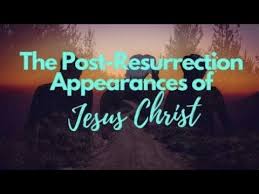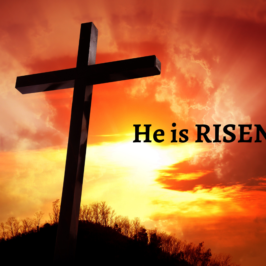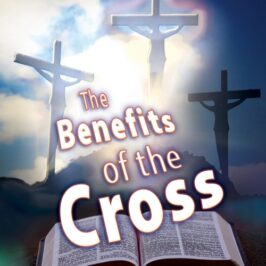CENTRAL THOUGHTThose who rebel against God’s authority and rule are directly pledging loyalty to Satan. INTRODUCTION:The two sons of Eli, Hophni and Phinehas, died in the battle against the Philistines. Eli also died when the bad news of the death of his sons and the seizure of the ark by the Philistines reached him. The worship and pilgrimage to Shiloh was truncated and Israel became subservient to the Philistines. It must have been a big blow to Samuel considering how close he was to his family. This was the state when Samuel became judge in Israel.After many years of reflection, Samuel took his first major steps, which was to initiate national repentance and prayers. This action provoked the Philistines who now launched attack against Israel. The intercession of Samuel and his word of motivation gingered the people of Israel to the resounding defeat of the Philistines at Ebenezer.Samuel had a complex administrative structure that saw him create offices in Bethel, Gilgah and Mizpeh, while his home was in Ramah. BIBLE TRUTH: QUESTION 1) WHAT WERE THE HIGH POINTS OF SAMUEL’S RULE AS A JUDGE, PROPHET, AND PRIEST IN ISRAEL? For Samuel, the transition to headship was sudden. It followed the tragic death of Eli and his sons. After twenty...
Learn MoreCENTRAL THOUGHT Personal loyalty and commitment to God distinguishes a man. INTRODUCTION: Samuel was one of the very significant historical figures in the evolution of the state of Israel. His birth was a miraculous answer to the prayers of Hannah, a wife of Elkanah, a Levite from Ephraim. In gratitude to God, the family pledged the young boy to the service of God for the rest of his life. Samuel consequently grew up with the household of Eli, the Priest in Shiloh. Samuel showed interest, focus and dedication in the service of God. He was soon distinguished by his loyalty to God and commitment to the ministry. This was in sharp contrast to the privileged sons of Eli, Hophni and Phinehas, who abused the office of Priesthood and would not accept any correction. A remarkable event was the call of the boy Samuel by God and his inability to discern the voice of God, assuming it to Eli’s call. In his innocence, he also related to Eli everything that God told him about the Priest’s impending judgement. In this first part of the study, we shall examine the childhood experiences of Samuel and the important lessons we could learn from them. Lesson objectives:The objectives of this study are to:Compare...
Learn MoreCENTRAL THOUGHTChrist still ministers in His church today. TEXT: MATT.28:16-20; JOHN 20:19-29; ACTS 1:3-11 INTRODUCTION:After the resurrection of the Lord Jesus and before his ascension into heaven, He appeared to His disciples in bodily form on several occasions. This was to convince them that He is risen, in view of the task ahead. Even after His resurrection, Jesus continued to physically manifest Himself to the church in ways that show that He is alive.The post resurrection ministry of Christ has many remarkable events in church history. It was during this period that the ministry of the Apostles was confirmed, and the great commission emphatically declared. The outpouring of the Holy Spirit came to pass, and the church started in earnest. Non-Jews were admitted into the grace of God, and the message of the kingdom became clearer to His disciples.The ministry of Christ is still very active to this day. There are daily signs and wonders done in His Name, showing that the risen Christ is still the same yesterday, today, and forever (Heb.13:8). It Is good and important for us to continually remind ourselves of the presence of Jesus Christ in the present-day church. LESSON OBJECTIVESThe objectives of this study are to: Discuss instances of the appearance of Jesus...
Learn MoreCENTRAL THOUGHTWithout the resurrection, the belief in God’s saving grace through Christ is vain. TEXT: JN 11:25-26, JN. 20:1-18, 1 COR. 15:1-4, 14-21 INTRODUCTION:The resurrection of Jesus Christ is foundational to the Christian faith and without it, the faith of the believer in Christ, is in vain (1 Cor.15:17). The manner in which Jesus died, buried, and resurrected was unique, with infallible proofs and had no precedence. The resurrection on the third day was literal, real, and physical and it was after he was crucified, confirmed dead, and buried. All four gospels recorded that Jesus resurrected on the first day of the week (Luke 24:1, John 20:1), but Matthew (Matt. 28:1) and Mark (Mark 16:1) specifically added that it was after the sabbath (our present-day Saturday) and so Sunday could be regarded as the resurrection morning. The great mystery of godliness is based on the truth that God was manifested in the flesh, justified in the Spirit, seen of angels, preached unto the Gentiles, believed on in the world and received up into glory (1 Tim. 3:16).The resurrection of Jesus Christ is a very important event that provides hope and assurance that by His resurrection we have eternal life. LESSON OBJECTIVES1.) To understand what the word “resurrection” means.2.) Outline...
Learn MoreCENTRAL THOUGHTThe death and resurrection of Jesus Christ purchased total salvation for the believer. TEXT: Isaiah 53:1-10 INTRODUCTION:The cross is symbolic of suffering, shame, and death, yet it is the wisdom of God for our total salvation (1 Cor. 1:18-21). The sin of our progenitor’s (Adam and Eve) permeated the entire human race. Being a just God, this sin must be punished for “The wages of sin is death …. Rom. 6:23a). Glory to God! Jesus voluntarily bore the punishment of our sins, took our guilt upon Himself and thereby reconciled us to God through His vicarious death on the cross (1 Pet. 2:24).This unparallel act of love exemplified by Christ’s death on the cross has graciously bestowed on the believer a lot of benefits. The knowledge of these benefits and how we can access them form the focus of this study. LESSON OBJECTIVESBy the end of this lesson, believers should be able to:1.) Explain the meaning of the cross.2.) Identify the usefulness of the Blood that Christ shed on the cross.3.) Explain other benefits of the Cross of Christ; and4.) Examine the seven (7) last statements of Jesus Christ on the cross. BIBLE TRUTH QUESTION 1.) WHAT DOES THE CROSS MEAN? DEUT. 21:22-23, GAL. 3:13, 1 COR. 1:18-25,...
Learn More



